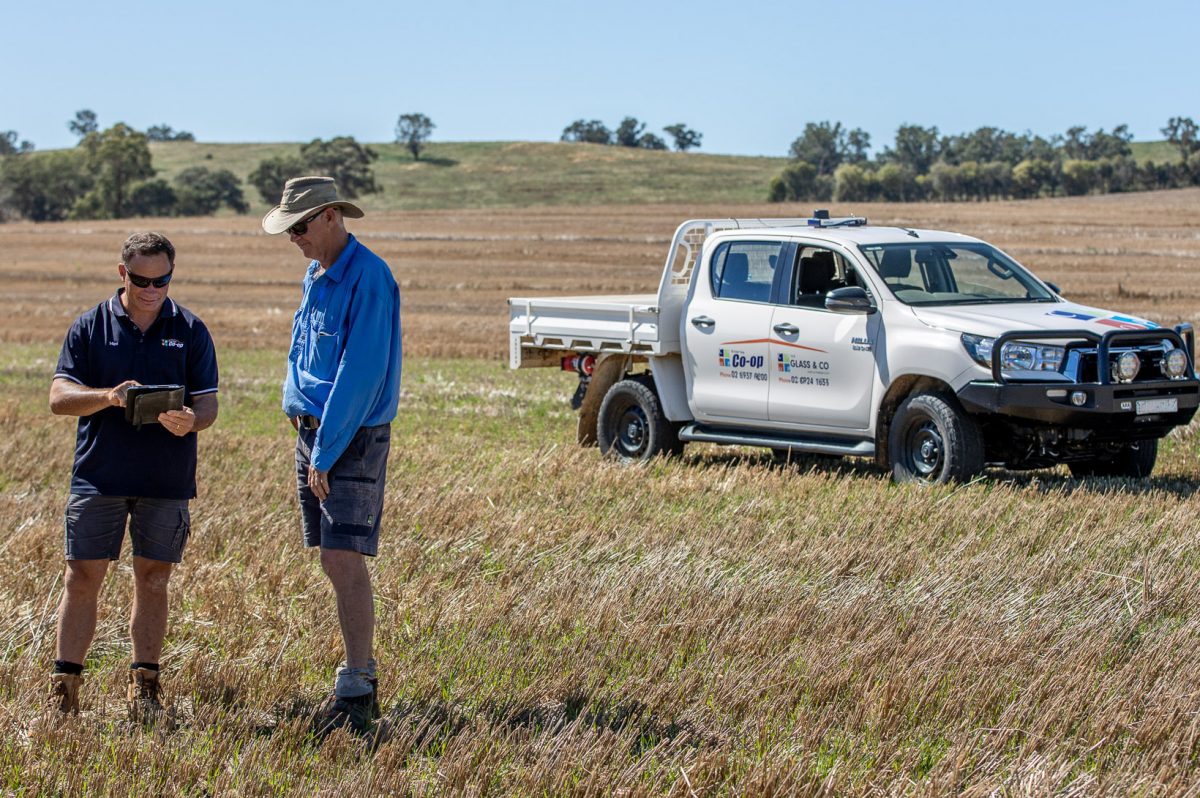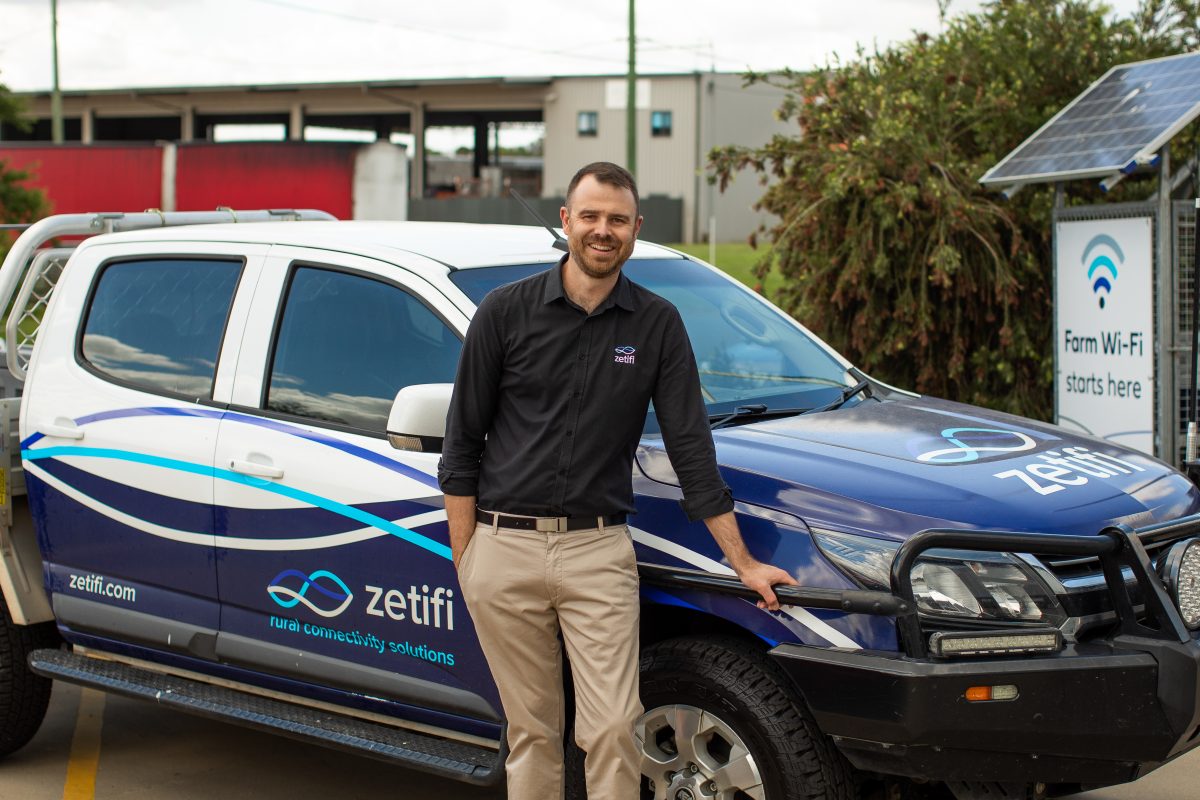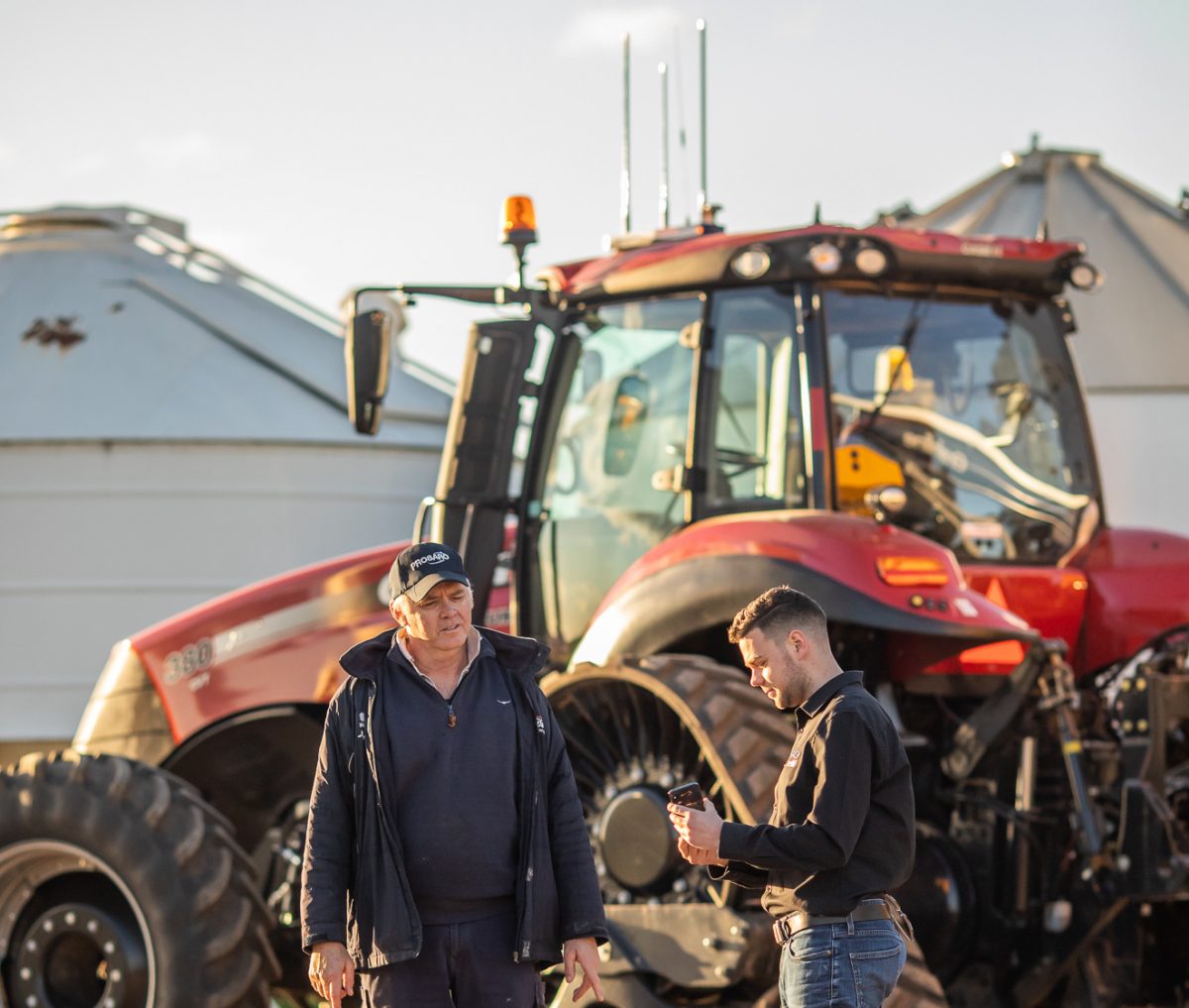
An agronomist and farmer connect with the ZetiRover. Photo: Rob Landsdown.
Keeping farmers connected has always been a challenge here in our wide brown land, but Wagga company Zetifi is fast becoming a world leader in bringing the regions online.
Zetifi announced today (Wedesday, 7 December) that it has raised $12 million in funding, collaborating with Telstra and GrainCorp to expand its long-range Wi-Fi coverage extension products.
“Just making sure people’s phones are working in the ag sector is really the biggest driver at the moment,” said Zetifi business development manager Rob Lansdown.
“Once you’ve got Wi-Fi then you’ve got data and you can make phone calls, and for agronomists and livestock sales guys that are travelling 100,000 km a year around farms and people are trying to call them while they’re on their way, it ensures that they can get back to them.”
For telecommunications companies both here and overseas, the Zetifi products provide the missing link.
“The reason that the problem exists for companies like Telstra is quite a simple one and it’s about population density,” Rob explained.
“The economies of scale just don’t add up for the cost of a very expensive cell tower in an area where there are only five or six farms in the vicinity.”
As well as keeping the phone connected, extending Wi-Fi coverage overcomes a major barrier to the digitalisation of agriculture and provides a platform for the future.
“Our experiences over the last few years confirm that agriculture and the ag services sectors are eager to adopt digital technology and automation, as long as they have a connectivity solution that supports it,” said CEO and co-founder Dan Winson.
“We approached the problem from the farmers’ perspective and the ability to be on-farm testing our ideas within a few minutes has accelerated the development of our products and technology.
“It’s allowed us to rapidly iterate and refine the scalable applications of our technology that we’ll now be preparing for the mass market.”

Zetifi CEO and founder Dan Winson has his eye on the US market. Photo: Rob Lansdown.
For Telstra, the investment helps deliver on obligations to support regional and remote areas in an innovative and cost-effective way, building on existing infrastructure.
“There is massive opportunity for technology to help Aussie farmers boost agricultural output and play a bigger part in Australia’s growing digital economy,” said Telstra’s head of innovation Luke Harwood.
“Innovations like those developed by Zetifi and our other agtech investments that leverage our network and scale for the benefit of farmers, local jobs and local communities are great examples of the solutions we want to support.”
GrainCorp CEO Robert Spurway also recognised the solutions presented by the Wagga company.
“Connectivity is a key enabler for the advancement of modern agriculture,” he said.
“GrainCorp Ventures focuses on identifying and accelerating the next generation of technologies that will keep growers ahead of the competition, and that’s what we see in Zetifi.”

Connectivity is the key to future advancements in agriculture. Photo: Rob Lansdown.
It’s widely acknowledged that the next big step forward in agriculture is autonomous farming via drones, self-driving tractors and seed-planting robots, but the key to making it happen is connectivity.
“The productivity time for an autonomous tractor is really related to what data you can send back and be able to give commands to that tractor, so longer term that definitely will be a big driver for us,” said Rob Lansdown.
“We’re doing some work with Swarm Farm Robotics, an Australian autonomous machinery company, and that’s hopefully a sign of things to come.
“But at the moment, really, it’s phone calls and emails, and then autonomous machinery down the track.”
Zetifi is already in conversations with connectivity providers in Canada and has established an office in Rochester, New York, with a view to introducing products to the US in the next 12 to 18 months.
“Connectivity in rural areas on farms is a global problem and so they’re looking for solutions,” said Rob.
For Wagga, the expansion of Zetifi’s operation means more local technology jobs and an increased awareness of what can be achieved outside the major centres.
“We’ll probably be doubling the size of our workforce over the next 12 months,” Rob explained.
“And it’s just really exciting that we’re showing people that technology and commercialisation and advanced manufacturing can happen from a regional area.”









